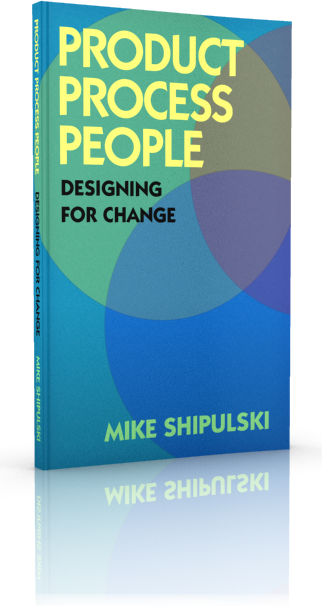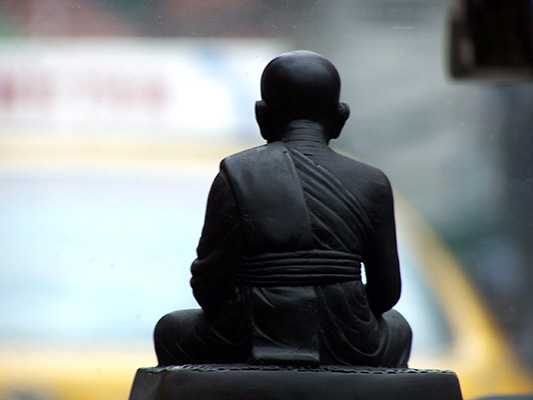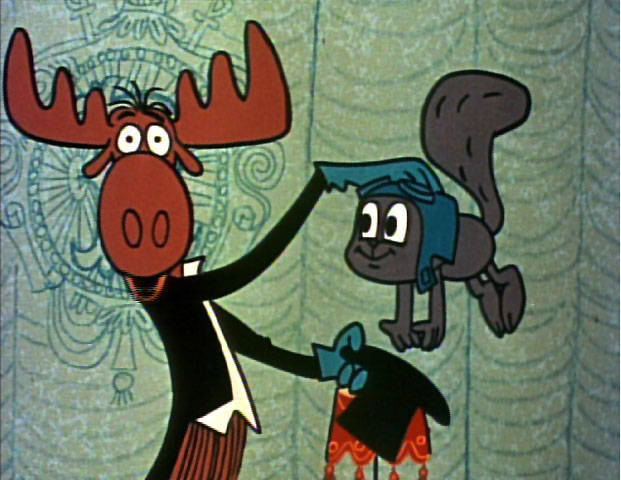Archive for the ‘Positivity’ Category
Celebrating Four Years!
 Today is a celebration – four years of Shipulski On Design!
Today is a celebration – four years of Shipulski On Design!
To celebrate, I’m introducing my new book — Product Process People – Designing for Change.
And as a gift, I’m offering for free (pdf format) to my subscribers. If you’re a subscriber, click below to download the pdf. If you’re not a subscriber and you want the book, simply subscribe to my blog (see the box on the right) and download the pdf. (It’s the honor system.)
[wpdm_file id=3] Download it, read it, and share it with all your friends. (They don’t have to subscribe because you do.)
I hope the book helps you have a meaningful discussion about the future.
And for me, to help spread the message, if you download it please share it.
Thanks for reading, and I look forward to a great year 5.
Mike
Positivity – The Endangered Species
There’s a lot of negativity around us. But it’s not upfront, unadulterated negativity; it’s behind-the-scenes, hunkering, almost translucent negativity. And it’s divisive.
This type of negativity is so pervasive it’s almost invisible. It’s everywhere; we have processes built around it; have organizations dedicated to it; and we use it daily to drive action.
Take continuous improvement for example. It has been a standard toolset and philosophy for making things better. Yet it’s founded on negativity. It’s not anti-people, anti-culture negativity. (In fact lean and Six Sigma go on their way to emphasize positive culture as a key foundation.) It’s subtle negativity that slowly grinds. Look at the language: reduce defects, eliminate waste, corrective action, tight feedback loops, and eliminate failure modes. There is a negative tint. It’s not in your face, but it’s there.
I’m an advocate of lean and I have advocated for Six Sigma, both of which have moved the needle. But there’s a minimization thread running through them. Both are about eliminating and reducing what is. Sure they have their place, but enough is enough. We need more of creating what isn’t, and bringing to life things that aren’t. We need more maximization.
Negativity has become natural, and positivity has become an endangered species. When there’s a crisis we all come together instinctively to eliminate the bad thing. Yet it’s fourth or fifth nature to come together spontaneously when things go well. Yes, sometimes we celebrate, but it’s the exception. And it’s certainly not our first instinct. (Actually, I don’t think we have a word for spontaneous amplification of positivity. Celebration is the closest word I know, but it’s not the right one.)
Negative feedback is good for processes and positive feedback is good for people. Processes like when their flaws are eliminated, and people like when their strengths are amplified. It’s negativity for processes, and positivity for people.
There should be a rebalancing of negativity and positivity. For every graph of defect reduction over time, there should be a sister plot of the number of good things that happened over time. For every failure mode and effects analysis there should be a fishbone of chart of strengths and the associated actions to amplify them.
It’s natural for us to count bad things and make them go away, and not so natural to count good things and multiply them. Take at the meeting agendas. My bet is there’s far more minimization than maximization.
I usually end my posts with some specific call to action or recommendation. But for this one I don’t have anything all that meaty. But I will tell you how I’m going to move forward. When I see good work, I’m going to publicly acknowledge it and send emails of praise to the manager of the folks who did the good stuff. I’m going to track the number of emails I send and each week increase the number by one. I’m going to schedule regular meetings where I can publicly praise people that display passion. And I’m going to create a control chart of the number of times I amplify positivity.
And most of all I will try to keep in front of me that everything we do is all about people, and with people positivity is powerful.
The One Thing To Believe In
I used to believe in control, now I believe in trust.
I used to believe in process, now I believe in judgment.
I used to believe in WHAT and HOW, now I believe in WHO and WHY.
I used to believe in organizational structure, now I believe in personal relationships.
I used to believe in best practices, now I believe in the judgment to choose the right practices.
I used to believe in shoring up weaknesses, now I believe in building on strengths.
I used to believe in closing the gap, now I believe in the preferential cowpath.
I used to believe in innovation, now I believe in inspiration.
I used to believe in corrective action, now I believe in passionate action.
I used to believe in top down, now I believe in the people that do the work.
I used to believe in going fast, now I believe in doing it right as the means to go fast.
I used to believe in the product development process, now I believe in the people executing it.
I used to believe the final destination, now I believe in the current location.
I used to believe in machines, now I believe in the people that run them.
I used to believe in technology, now I believe in the people developing it.
I used to believe in hierarchy, now I believe in personal responsibility.
But if there’s one thing to believe in, I believe in people.
Changing Your Behavior Is Hard
 Changing your behavior is hard. Often, just wanting to change is insufficient, especially for change that runs deep. For deep change, on its own the want doesn’t cut it. What’s required is a powerful why. Why do you want to change? What’s your motivation?
Changing your behavior is hard. Often, just wanting to change is insufficient, especially for change that runs deep. For deep change, on its own the want doesn’t cut it. What’s required is a powerful why. Why do you want to change? What’s your motivation?
But all whys are not created equal with some motivations more powerful than others. Is your motivation all about you, about your family, or society as a whole? The less it’s about you the greater its hold. Clarity on why is vital because it brings staying power.
A meaningful why can help maintain much needed determination as you push away from your as-is self. And determination is crucial because saying no to your previous behavior is exceptionally difficult because it demands full acknowledgement of your true self. In an unhealthy way, changing your behavior can be thought of as an admission – in the form of actions – that your behavior has not been up to snuff. But that’s not it. Changing your behavior is an admission you value yourself enough to face a self-imposed desire to bring more goodness; you value your family enough to bring them happiness, and you value life itself enough to reduce its suffering. It’s not about fixing something that’s broken; it’s about bringing more goodness and light.
Changing your behavior is no small thing, and to make it lasting requires deep grounding. To work through distractions; to hold onto the courage; to continually add the energy all require a strangle hold on what’s truly important. So I ask you know – what’s truly important?
You can fake it for a while, but in the end, because your motivation is not grounded, you’ll revert to your previous self. And I think this is worse than simply maintaining yourself as-is. You spend precious energy forcing the behavior because there’s no grounded motivation. Also, you set expectations that the temporary new behavior is now the standard, and when you revert expectations must be reset.
Here’s a proposal: Start small – latch on to a small why and create a small change. Feel what it feels like and own it. Use your new positivity to springboard to a bigger why and a bigger change and make that one stick. Next, stand on the shoulders of the goodness to reach for a bigger, broader why and a bigger, broader change. Then, repeat.
The Illusion of Control
 When things don’t go as planned, you have a choice – look outside or look inside. Looking outside is about control and looking inside is about lack of control.
When things don’t go as planned, you have a choice – look outside or look inside. Looking outside is about control and looking inside is about lack of control.
When you look outside, what you’re saying is the universe didn’t behave per the plan, and you’re going to teach it a lesson. You’re going to tighten the screws until it does what you want; you’re going to add personal energy (probably all your energy) to lock things down; you’re going to control what must be controlled so the universe follows your plan.
The look outside approach can work, for a while. You can put your fingers and toes in all the holes; you can make sure everyone does their job; and you can be the master scheduler for the universe, but only for a while because the universe has limitless energy and you don’t. And while your control-the-world strategy looks like it’s working, it’s not – not even in the short term. The universe is playing you – it’s sucking your energy while you tread water. The universe isn’t stupid – it knows you can’t last. But at its core, the universe likes to teach; and when you fight it head-to-head, it wants to teach you about opportunity cost. While you spend all your energy wresting it to a draw, it prevents you from moving forward. It wants you to learn you have finite energy and to be thoughtful about how you spend it.
When you look inside, what you’re saying is the universe didn’t behave per the plan, and didn’t think it would. You’re going to learn from the universe and work with it; you’re going to surf the wave of the universe’s energy and carve a cross product with its momentum; you’re going to adjust your plan because you have a lack of control over the universe and most other things.
The look inside approach is effective in the long term because it works with the natural trade winds of the universe. Sailing downwind takes far less energy than tacking into the teeth of the cosmic winds, and it’s faster. This is the lesson the universe wants you to learn. But it’s not that easy. The universe constantly tests you. It changes wind direction without our consent and watches. Will you look outside or inside? Will you tack into the wind or change course and throw a huge bow wave as you go?
The toughest part isn’t the wind; it’s the other sailors. They’ve been trained over the years to tack quickly and tack often, to sail directly toward the destination regardless of the wind, even if they must grab the oars and break their backs into the wind. For those sailors, a course change is a sign of weakness – real sailors battle the wind; real sailors stay the course even if the great circle route is faster.
Thing is, plans never happen as planned, and yours is no different. Yes, control things that can be controlled, but remember – the uncontrollable can’t be controlled just because you want them to be. The universe has been around a long time and knows the ropes. It knows you don’t have control over it; it knows you only have control over how you respond to it.
When you work hand-in-hand with the universe, it rewards you, though it does so obliquely. So if your winds suddenly change and you have to sail away from your grand destination, don’t despair – that’s the universe rewarding good behavior. Double the watch and scan the horizon for the uncharted island with far more treasure than you thought possible. The universe calls that karma.
Image courtesy of YachtPals.com
Own The Behavior
 The system is big and complex and its output is outside your control. Trying to control these outputs is a depressing proposition, yet we’re routinely judged (and judge ourselves) on outputs. I think it’s better to focus on system inputs, specifically your inputs to the system.
The system is big and complex and its output is outside your control. Trying to control these outputs is a depressing proposition, yet we’re routinely judged (and judge ourselves) on outputs. I think it’s better to focus on system inputs, specifically your inputs to the system.
When the system responds with outputs different than desired, don’t get upset. It’s nothing personal. The system is just doing its job. It digests a smorgasbord of inputs from many agents just like you and does what it does. Certainly it’s alive, but it doesn’t know you. And certainly it doesn’t respond differently because you’re the one providing input. The system doesn’t take its output personally, and neither should you.
When the system’s output is not helpful, instead of feeling badly about yourself, shift your focus from system output to the input you provide it. (Remember, that’s all you have control over.) Did you do what you said you’d do? Were you generous? We’re you thoughtful? We’re you insightful? Did you give it your all or did you hold back? If you’re happy with the answers you should feel happy with yourself. Your input, your behavior, was just as it was supposed to be. Now is a good time to fall back on the insightful grade school mantra, “You get what you get, and you don’t get upset.”
If your input was not what you wanted, then it’s time to look inside and ask yourself why. At times like these it’s easy to blame others and outside factors for our behavior. But at times like these we must own the input, we must own the behavior. Now, owning the behavior doesn’t mean we’ll behave the same way going forward, it just means we own it. In order to improve our future inputs we’ve got to understand why we behaved as we did, and the first step to better future inputs is owning our past behavior.
Now, replace “system” with “person”, and the argument is the same. You are responsible for your input to the person, and they are responsible for their output (their response). When someone’s output is nonlinear and offensive, you’re not responsible for it, they are. Were you kind? Thoughtful? Insightful? If yes, you get what you get, and you don’t get upset. But what if you weren’t? Shouldn’t you feel responsible for their response? In a word, no. You should feel badly about your input – your behavior – and you should apologize. But their output is about them. They, like the system, responded the way they chose. If you want to be critical, be critical of your behavior. Look deeply at why you behaved as you did, and decide how you want to change it. Taking responsibility for their response gets in the way of taking responsibility for your behavior.
With complex systems, by definition it’s impossible to predict their output. (That’s why they’re called complex.) And the only way to understand them is to perturb them with your input and look for patterns in their responses. What that means is your inputs are well intended and ill informed. This is an especially challenging situation for those of us that have been conditioned (or born with the condition) to mis-take responsibility for system outputs. Taking responsibility for unpredictable system outputs is guaranteed frustration and loss of self-esteem. And it’s guaranteed to reduce the quality of your input over time.
When working with new systems in new ways, it’s especially important to take responsibility for your inputs at the expense of taking responsibility for unknowable system outputs. With innovation, we must spend a little and learn a lot. We must figure out how to perturb the system with our inputs and intelligently sift its outputs for patterns of understanding. The only way to do it is to fearlessly take responsibility for our inputs and fearless let the system take responsibility for its output.
We must courageously engineer and own our behavioral plan of attack, and modify it as we learn. And we must learn to let the system be responsible for its own behavior.
Do You Care Enough To Be Lonely?
 If you don’t feel lonely, you’ve succumbed to group-think. No, it’s worse – you’ve stopped thinking altogether. If you don’t feel lonely you’re doing it wrong.
If you don’t feel lonely, you’ve succumbed to group-think. No, it’s worse – you’ve stopped thinking altogether. If you don’t feel lonely you’re doing it wrong.
Mainstream follows mainstream – they don’t know why, they just do. In truth, mainstream likes to be lead by the nose because it’s easy, because they can get through the week without caring. But not caring is not right.
But when you care, when you really care, when you care so much it hurts, you’ve got it right. Loneliness hurts because you see habitual mistakes on the horizon; it hurts because you see bureaucracy trump thinking; it hurts because you see hierarchy squelch creativity. Put simply – it hurts because you care enough to look and you’re smart enough to see.
But take comfort in your loneliness. Though sometimes it feels they want to poke your eyes out, deep down companies want you to see. Sure, they’re afraid of the ruckus, but they want you to wrestle with the familiar. Yes, they won’t sanction your detectiveness, but they want you to investigate the crime scene. Absolutely – though with plausible deniability – they want your inner Nostradamus to conger the future.
Every-day-all-day loneliness is too much, but a low dose is good. 100% loneliness festers into anger, but now-and-again loneliness is healthy.
Take stock in your loneliness – it’s a sign your brain is turned on. And it’s a sign you care.
Engineering Incantations
 Know what’s new in the new design. To do that, ask for a reuse analysis and divvy up newness into three buckets – new to your company, new to your industry, new to world. If the buckets are too big, jettison some newness, and if there’s something in the new-to-world bucket, be careful.
Know what’s new in the new design. To do that, ask for a reuse analysis and divvy up newness into three buckets – new to your company, new to your industry, new to world. If the buckets are too big, jettison some newness, and if there’s something in the new-to-world bucket, be careful.
Create test protocols (how you’ll test) and minimum acceptance criteria (specification limits) before doing design work. It’s a great way to create clarity.
Build first – build the crudest possible prototype to expose the unfamiliar, and use the learning to shape the next prototypes and to focus analyses. Do this until you run out of time.
Cost and function are joined at the hip, so measure engineering on both.
Have a healthy dissatisfaction for success. Recognize success, yes, but also recognize it’s fleeting. Someone will obsolete your success, and it should be you.
To get an engineering team to believe in themselves, you must believe in them. To believe in them, you must believe in yourself.
Lasting Behavioral Change
 Whether it’s innovation, creativity, continuous improvement, or discontinuous improvement, it’s all about cultural change, and cultural change is about change in behavior.
Whether it’s innovation, creativity, continuous improvement, or discontinuous improvement, it’s all about cultural change, and cultural change is about change in behavior.
With the police state approach, detailed processes are created and enforced; rules are created and monitored; and training is dealt out and attendance taken. Yes, behavior is changed, but it’s fleeting. Take your eye off the process, old behavior slips through the fence; look the other way from the rules, old behavior clips the barbed wire and climbs over the wall. To squelch old behavior with the police state approach, gulag energy must be consistently applied.
To squelch is one thing, but to create lasting behavior change is another altogether. But as different as they are, there’s a blurry line of justice that flips innocent to guilty. And to walk the line you’ve got to know where it is:
- Apply force, yes, but only enough to prevent backsliding – like a human ratchet. Push much harder and heels dig in.
- The only thing slower than going slow is going too fast. (Remember, you’re asking people to change the why of their behavior.) Go slow to go fast.
- Set direction and stay the course, unless there’s good reason to change. And when the team comes to you with a reason, deem it a good one, and the cornerstone of trust is laid. (This is a game of trust, not control.)
But there are some mantras to maximize:
- Over emphasize the positive and overlook the negative.
- Praise in public.
- Don’t talk, do.
The first two stand on their own, but the third deserves reinforcement.
This isn’t about your words, it’s about your behavior. And that’s good because you have full authority over your behavior. Demonstrate the new behavior so everyone knows what it looks like. Lead the way with your actions. Show them how it’s done. For lasting change, change your behavior.
Even if changing your behavior influences only one person, you’re on your way. The best prison riots start with a single punch.
Prototype the Unfamiliar
 Today’s answer to everything is process and tools. Define the desired outcome; create the process; create the tools. Problem solved.
Today’s answer to everything is process and tools. Define the desired outcome; create the process; create the tools. Problem solved.
But if the desired outcome is lasting change, deterministic processes and static tools won’t get us there. Lasting change comes from people and their behavior.
Going forward, instead of creating process, create an environment of trust so people will investigate the unfamiliar; and instead of creating tools, create time – time for people to prototype the unfamiliar.
Choose to Choose
 There will always be more work than time – no choice there. But, you can choose your mindset. You can choose to be overwhelmed; you can complain; and you can feel bad for yourself. You can also choose to invert it – you only work on vital projects because less important ones aren’t worth your time. Inverted, work is prioritized to make best use of your valuable time. When there’s too much work you can whine and complain, or you can value yourself – your choice
There will always be more work than time – no choice there. But, you can choose your mindset. You can choose to be overwhelmed; you can complain; and you can feel bad for yourself. You can also choose to invert it – you only work on vital projects because less important ones aren’t worth your time. Inverted, work is prioritized to make best use of your valuable time. When there’s too much work you can whine and complain, or you can value yourself – your choice
Most of us don’t choose what we work on, and sometimes it’s work we’ve done before. You can choose to look at as mind numbing tedium, or you can flip it. You can look at it as an opportunity to do your work a better way; to try a more effective approach; to invent something new. With repeat work you can dull it down or try to shine – your choice.
Sometimes we’re asked to do new and challenging work. You can choose to be afraid; you can make excuses; and you can call in sick for the next month. Or you can twist it to your advantage and see it as an opportunity to stretch. With challenging work you can stunt yourself or grow – your choice.
Negativity repels and positivity attracts – it’s time for you to choose.


 Mike Shipulski
Mike Shipulski